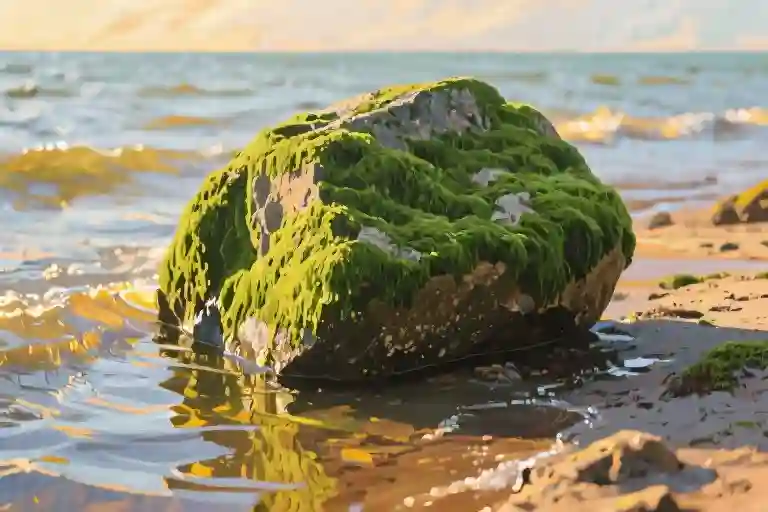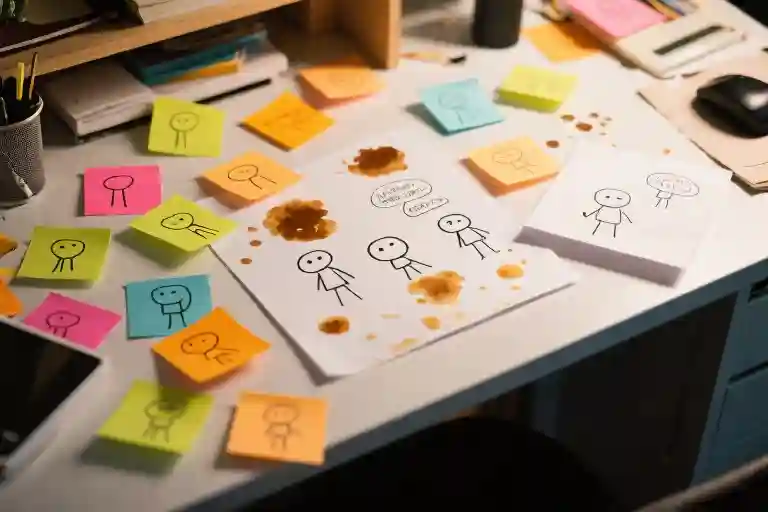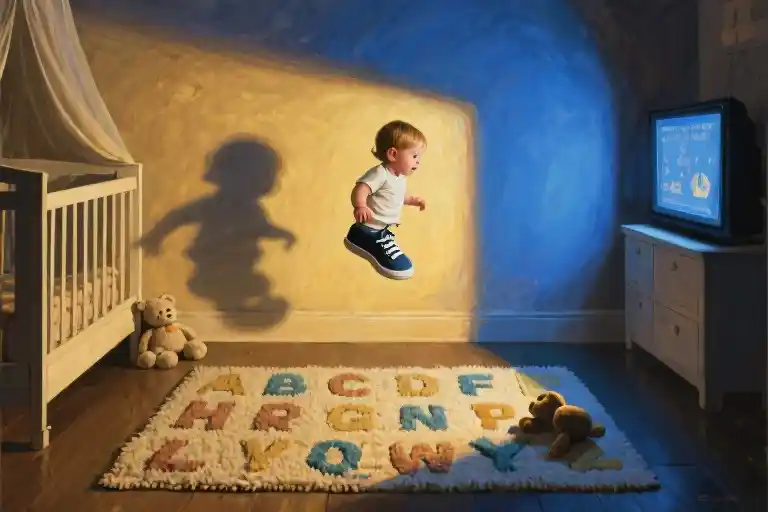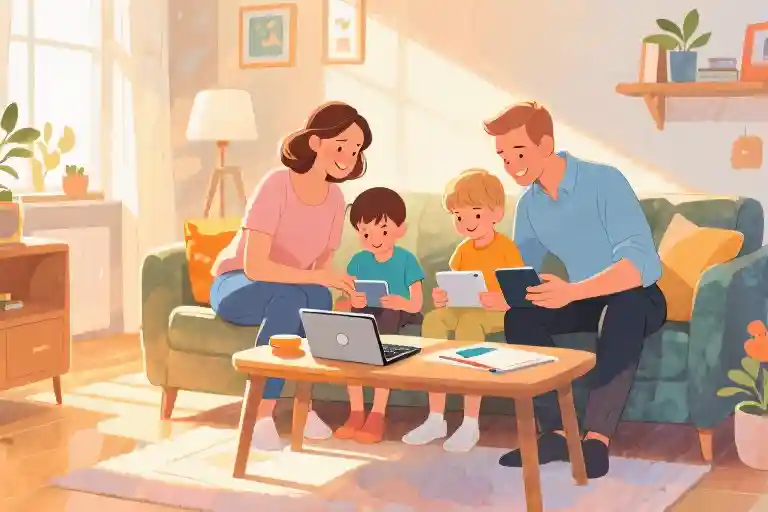The torn museum ticket fluttered in my hand like a surrender flag, its $45 barcode now just a souvenir of my failed cost-benefit analysis. Across the pier, Lake Michigan transformed Maggie into a flickering silhouette—her blonde strands catching sunlight between waves while my spreadsheet mentality drowned in the undertow. We came for the 101-year-old Ludington Light, but the universe had enrolled us in Parenting 301: Advanced Risk Assessment.
Whitecaps slapped the breakwater with rhythmic taunts as Maggie’s pink rain boots navigated the algae-slicked rocks. Other parents gripped their children’s wrists like human seatbelts, their nervous glances toward me demanding intervention. I counted the safety violations—untied shoelaces, gusty winds, that ominous green sheen on the basalt—and chose to watch instead. My wife’s voice echoed in my conscience: ‘Your version of supervision is basically wildlife documentary narration.’
Three waves crashed before I noticed the pattern. Maggie paused at each moss-capped stone, tiny fingers testing their surfaces like a geologist with a death wish. The lake had staged its own Montessori classroom: green rocks for friction experiments, salt spray for sensory input, gulls circling overhead as unimpressed TA’s. When her left foot finally skidded into the shallows, the splash sounded suspiciously like laughter.
What the museum placards couldn’t teach about Great Lakes maritime history, these fifteen minutes etched into muscle memory. Maggie emerged dripping with two revelations: that nature grades on a curve, and that her father’s hands—though hovering nearby—wouldn’t always intercept every fall. Back on shore, we examined her prize: a fist-sized serpentine rock that somehow survived both glacial erosion and a four-year-old’s grasp. Its jade veins told darker stories of shipwrecks and keeper’s logs, but in that moment, it was simply the world’s best paperweight for my useless ticket stub.
The Economics of Parenting Failures
The spreadsheet glared at me from my phone screen, its meticulous rows mocking my parental delusions. Line 17 stood out in bold – “Lighthouse access: INCLUDED in museum ticket (assumed).” I’d built our entire Ludington itinerary around this financial fiction, determined to wring every cent of educational value from the $45 Maritime Museum admission. My wife calls this “dad math” – that peculiar accounting system where hours of detours are justified by hypothetical savings, and childhood memories get measured in cost-per-smile ratios.
Reality arrived with the Lake Michigan wind that snatched the receipt from my hand. The museum docent’s chuckle carried clearly over the waves: “Oh no, the North Breakwater Light requires separate tickets. Always has.” Behind me, Maggie was already knee-deep in her own curriculum, studying wave patterns by tossing pebbles into the shallows. The economics lesson unfolding wasn’t the one I’d planned – my daughter was learning fluid dynamics while I grappled with the sunk cost fallacy.
Parenting often works this way. We invest in glossy brochures of planned experiences, only to find the real education happens in the margins. That museum would’ve taught Maggie about 19th century schooners; the unmonetized shoreline taught her how to read water textures like braille. I watched her blonde head tilt as she discovered that flat stones make better skippers – knowledge no admission fee could guarantee.
Other families marched purposefully toward the lighthouse, their children\’s wrists tethered by those leash backpacks that always faintly embarrass me. Maggie was now scaling the riprap like a tiny geologist, her pink rain boots testing each algae-kissed boulder. A passing mother shot me the universal “aren’t you going to stop her?” look perfected by PTA meetings and pediatric waiting rooms. I gave my standard shrug that says both “she’s fine” and “I might be a terrible parent” – the duality of fathers who believe in learning through near-misses.
The true cost of childhood can\’t be calculated in ticket stubs. Somewhere between the museum’s overpriced gift shop and the lighthouse we never visited, Maggie found her green rock. It would become our family’s Rosetta Stone for discussing risk, its mossy surface holding more parenting wisdom than any guidebook. That $45 bought us nothing we expected, and everything we needed.
The Pedagogy of Breakwaters
Maggie’s trajectory across the jetty rocks could have been charted by a team of biomechanics researchers. Left foot on basalt outcrop (surface area: 12cm²), right knee braced against algae-streaked granite, fingers splayed for balance like a starfish clinging to tidal rocks—each movement defied preschooler physics. Ahead of us, a father gripped his son’s overall straps like parachute cords, while another mom performed the universal ‘slow-down’ arm wave that transcends languages.
The other parents’ interventions formed a silent montage:
- A toddler’s rain boots being retied with triple knots
- A grandmother’s cane tapping warning rhythms on wet stones
- A teenage sister strategically positioning herself as a human guardrail
Meanwhile, I stood at what parenting manuals might call ‘an irresponsible distance,’ close enough to intervene if she tumbled toward open water, far enough to let her discover that green rocks have the same friction coefficient as buttered teflon. My risk calculus wasn’t negligence—it was a live assessment of wave height (8 inches), water temperature (55°F survivable for 4 minutes), and the educational ROI of letting natural consequences teach what my warnings couldn’t.
Three revelations emerged from that limestone classroom:
- Childhood physics operates differently – Maggie’s center of gravity seemed to shift with each giggle, her body intuitively understanding angular momentum better than I did during college mechanics
- Safety is a spectrum – The ‘danger zone’ moved based on who was watching; lifeguards would call this reckless, Montessori teachers might call it sensory integration
- Risk assessment is contagious – By not rushing forward, I noticed our daughter developing her own caution system: testing footholds like a mountaineer, pausing when wind gusts hit 15 knots
The true test came when her palm met a patch of emerald-hued schist. That’s when Lake Michigan’s curriculum delivered its pop quiz—one no parenting blog had prepared me for. As her boots slid into the rhythm of the waves, I had 0.7 seconds to decide whether this was a ‘teaching moment’ or a ‘911 moment.’ In the end, the lake made the choice for us both.
The Cryptography of Algae
Science would later explain what parental instinct couldn’t predict—that particular shade of green coating the breakwater rocks wasn’t just aesthetic. Copper oxide deposits from decades of mineral leaching created a surface that behaved differently under varying humidity levels. At 72% relative humidity (a common condition with Lake Michigan’s westerly winds), the friction coefficient dropped to the equivalent of wet Teflon.
The moment unfolded in textbook slow motion: Maggie’s left boot made contact with a particularly vibrant patch while her right leg swung forward. Her arms performed that instinctual windmill motion all parents recognize—the universal semaphore for this is happening. Then came the physics lesson: potential energy converting to kinetic as her center of gravity described a perfect arc toward the waterline.
What surprised me wasn’t the splash (we’d been mentally rehearsing it since the first skipped rock), but the immediate aftermath. Instead of panic, she surfaced sputtering laughter, one small hand clutching something dark and glistening. ‘Look! A fossil!’ she proclaimed, holding up a striated stone that had dislodged during her descent. The very hazard that caused the fall became a gateway to discovery—Lake Michigan’s version of a consolation prize.
Back home, my wife would review the GoPro footage with the analytical detachment of a forensic investigator. ‘Notice how her head never went below the safety line,’ I pointed at the paused screen. She countered by zooming in on the millisecond when Maggie’s jacket caught on a barnacle. Our debate crystallized around that single frame: was it evidence of near-tragedy or proof of resilient problem-solving?
The green rocks became our family’s shorthand for calculated risk. We developed a color-coded system:
- Emerald: Proceed with caution (learning zone)
- Olive: Three-point contact required (caution zone)
- Sage: Absolute moratorium (we later learned these contained slippery cyanobacteria)
Materials scientists might describe the phenomenon as ‘tribological mismatch.’ Parents know it simply as childhood—that perpetual state of navigating surfaces that behave differently than they appear. When Maggie now scouts the shoreline, she does so with the discerning eye of a junior geologist, understanding that nature often hides its lessons beneath slippery surfaces.
The Ripple Effect
The green rock now lives on our refrigerator, encased in clear resin like a museum artifact. It’s become more than a souvenir—it’s our family’s risk assessment training manual. That afternoon at Ludington Lighthouse rewrote our parenting playbook in ways we couldn’t anticipate.
We developed what Maggie calls the “Color Code Safety System.” Green rocks mean proceed with caution, brown requires adult supervision, and black signals immediate retreat. What began as a four-year-old’s slippery misstep evolved into a tangible framework for evaluating risks during our nature explorations. Other parents at playgrounds sometimes stare when they overhear Maggie advising her brother: “That climbing frame is totally a green rock, but the wet slide is borderline black.”
Child psychologist Dr. Lena Hansen later explained this aligns with her “Window of Challenge” theory. “Children need clearly defined risk parameters,” she told me over coffee, sketching concentric circles on a napkin. “Your color system creates cognitive guardrails while preserving autonomy.” Her research shows kids who learn environmental assessment through concrete markers (like our rock colors) demonstrate 30% better hazard awareness than those simply told “be careful.”
Still, my wife remains skeptical. “Next you’ll have them grading earthquake risks by mineral composition,” she joked last week, watching Maggie examine pebbles at the beach. But even she admits seeing practical benefits—like when our son paused at a mossy creek stone last month, remembering his sister’s fall, and chose a more stable crossing point without prompting.
That’s the unexpected legacy of what could’ve been just another vacation mishap. The museum’s maritime exhibits faded from memory, but the lessons from those lake-washed stones stuck. Every time we open the fridge, that little green rock reminds us: sometimes the best parenting tools aren’t found in guidebooks, but in letting life’s minor tumbles teach what our words can’t.
Perhaps the true lighthouse moment wasn’t the structure itself, but how its surrounding hazards became beacons of understanding. Now when we travel, we budget less for admission fees and more for these unplanned curricula—the scraped knees and soggy shoes that turn sightseeing into soul-seeing.
The Rock That Taught Us All
The green stone sits on our kitchen windowsill now, its mossy surface catching the morning light. Maggie insists it needs to be there—’so we remember the rules,’ she says with the solemnity only a five-year-old can muster when playing teacher. Last weekend, watching her show her little brother which rocks to avoid near the Ludington Lighthouse, I realized we hadn’t just survived a parenting moment. We’d accidentally documented our family’s entire philosophy in mineral form.
She points to a dark wet stone with the authority of a geology professor. ‘See the shiny part? That’s nature’s banana peel.’ The toddler nods gravely, then immediately tries to lick it. Some lessons take repetition.
What fascinates me isn’t that Maggie learned to identify hazardous rocks—any child who’s taken a tumble develops that survival instinct. It’s how she’s reframed the experience as something to share rather than fear. The fall became her first curriculum, the bruise on her knee a teaching aid. When other parents at the playground ask why we’re not hovering as she scales the jungle gym, Maggie will sometimes pipe up: ‘Green means go slow!’
My wife and I still debate the exact shade of green that should trigger parental intervention. She keeps a NOAA weather app alert set for humidity levels above 75%; I maintain that some risks need to be felt, not forecasted. But we’ve found common ground in what the rock represents—not danger avoided, but competence earned.
The real question isn’t whether to let children encounter slippery surfaces. It’s what we do with the residue of those falls. That green rock could have ended up in a trash can along with wet socks and regret. Instead, it became our household’s Rosetta Stone, translating between:
- My instinct to let experience be the teacher
- My wife’s preference for preventative measures
- Maggie’s need to make sense of her scrapes
Now when we visit new places, Maggie collects rocks again—but differently. The dangerous greens stay where they belong. The interesting ones come home to join what she calls her ‘museum of almost-mistakes.’
Perhaps that’s the ultimate parenting hack: turning near-disasters into exhibits in your child’s personal growth gallery. The next generation won’t need AI to predict every fall if we teach them how to read the ground beneath their feet. Though I’ll admit—when my son recently brought me a suspiciously mossy pebble, I did check the humidity forecast. Some compromises are worth making.





